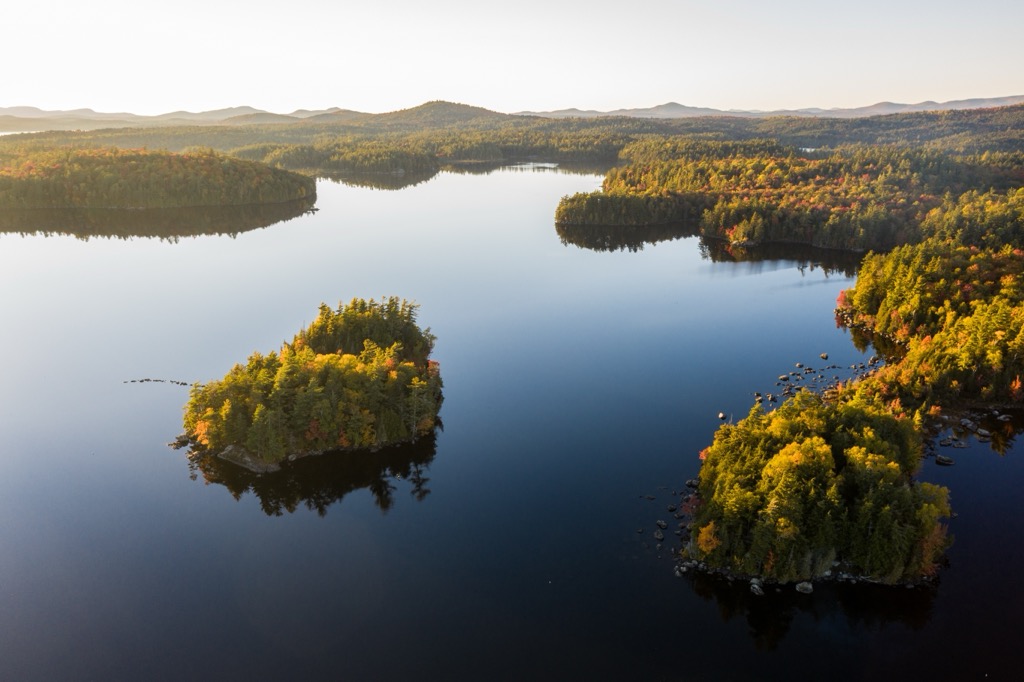Get PeakVisor App
Sign In
Search by GPS coordinates
- Latitude
- ° ' ''
- Longitude
- ° ' ''
- Units of Length

Yes
Cancel
Share ×

Scan the QR code and open PeakVisor on your phone
❤ Wishlist ×
Choose
Delete
The Saranac Lakes Wild Forest is an outdoor recreation destination situated in the northern region of the US state of New York. The wild forest is located in the north central region of Adirondack Park. The tallest mountain and most prominent mountain in the wild forest is Scarface Mountain at 3,071 feet (936 m) tall with 1,115 feet (340 m) of prominence.
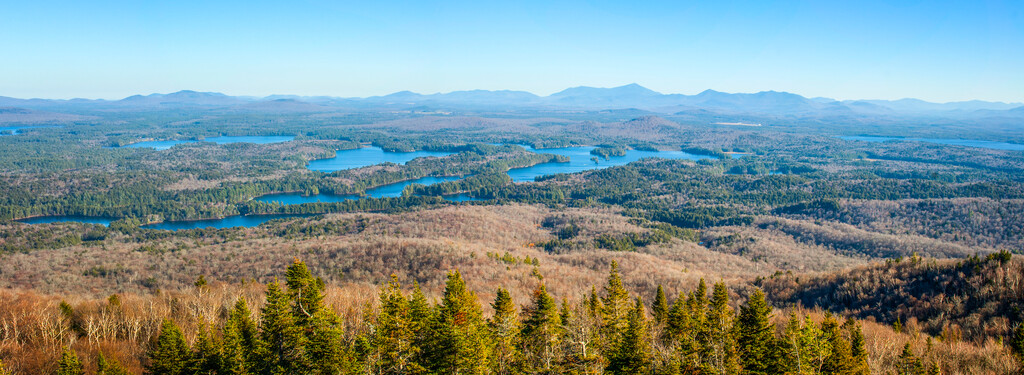
The Saranac Lakes Wild Forest is located in the north central region of Adirondack Park in Upstate New York. This non-continuous forest encompasses a network of protected areas which extend throughout Adirondack Park.
The wild forest encompasses rolling forested hills and a vast network of lakes, creeks, rivers, and ponds. Saranac Lakes Wild Forest covers 79,000 acres (31,970 ha) across both Franklin and Essex counties.

Part of the Adirondack Forest Preserve, the wild forest contains 144 bodies of water, which mark the main feature of the protected region. Larger lakes in the region include Upper, MIddle, and Lower Saranac Lakes, Tupper Lake, Lake Colby, Oseetah Lake, and Lake Placid.
The Saranac River feeds into many of the lakes in the region. The West Branch Ausable River is situated along the eastern edge of the wild forest while the Raquette River is situated near the southern edge of the forest.
Amidst the lakes and ponds lie rolling forested hills which feature gradual elevation changes along the shores. Land outside of the surrounding lake region is more rugged and mountainous while a few small ridgelines are located between the lakes. Wetlands are common near the bodies of water while high elevations feature a forested landscape similar to that found throughout Adirondack Park.
Additionally, the Saranac Lakes Wild Forest is located near a number of other parks and destinations for outdoor recreation. Directly east lies the Sentinel Range Wilderness and Wilmington Wild Forest. North of the forest lies McKenzie Mountain Wilderness and Debar Mountain Wild Forest. The High Peaks Wilderness is situated south of the wild forest.
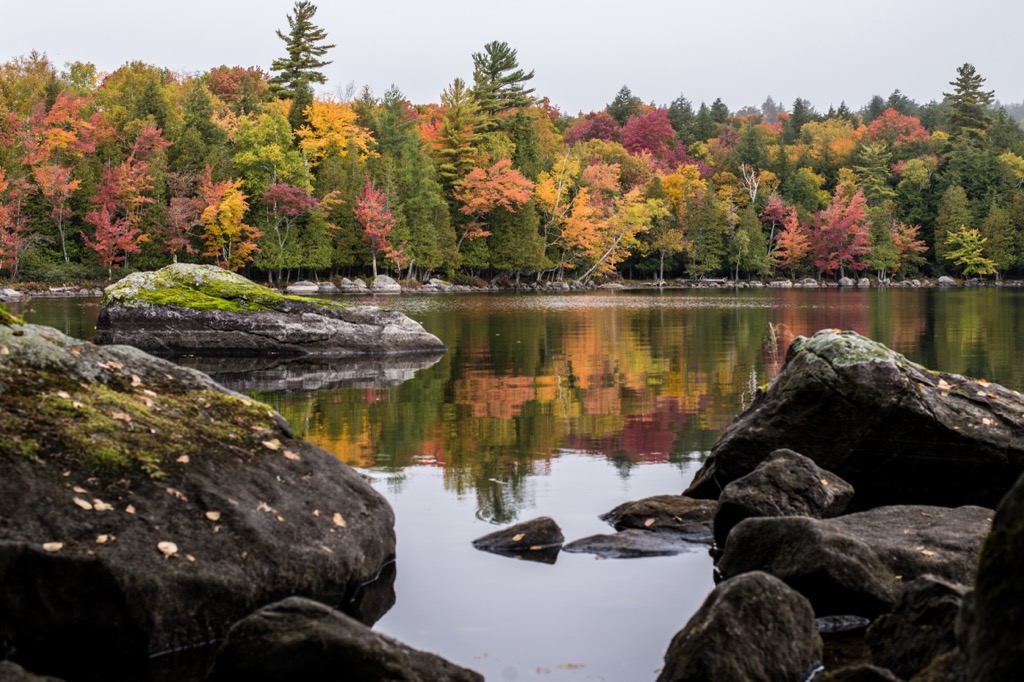
The Saranac Lakes Wild Forest is located within Adirondack Park, with the park’s boundaries being loosely defined by the Adirondack Mountains. The nearby Sentinel Range Wilderness features the Sentinel Range, a subrange of the larger Adirondack Mountains.
The entire Adirondack Mountain range is a large massif which spans across much of the northern portion of the state. The range spans roughly 5,000 sq. miles (13,000 sq. km) of terrain throughout the region.
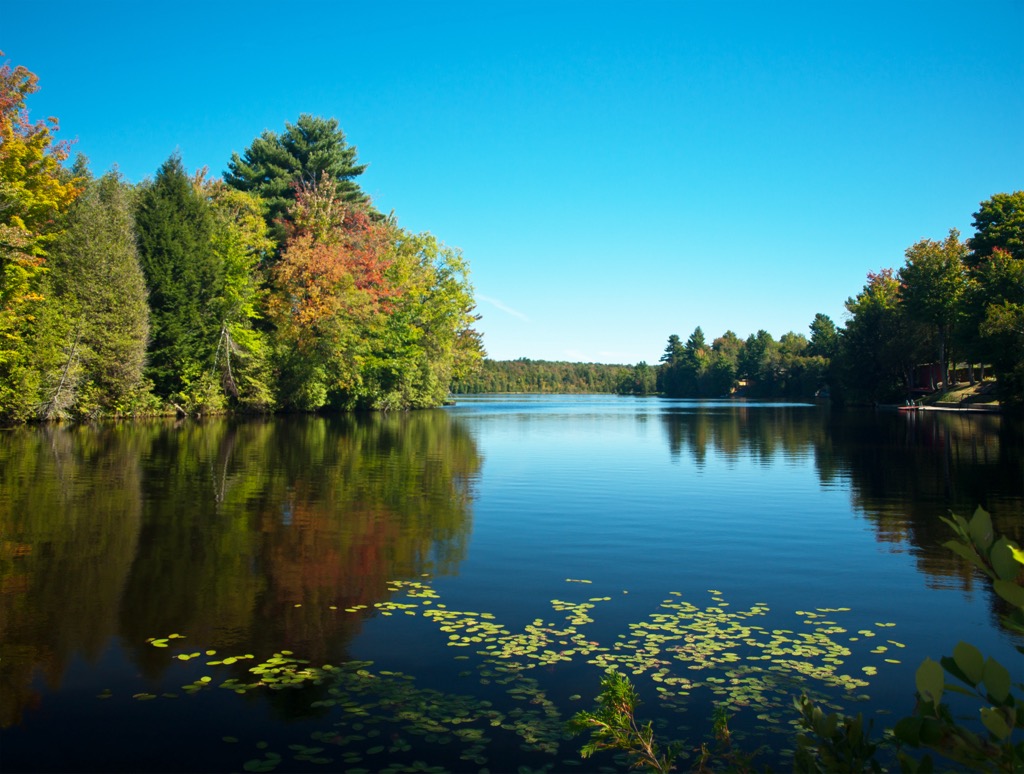
Rocks in the region date back as early as 2 billion years ago. Roughly 1.5 to 1 billion years ago, during the Grenville Orogeny, the range began shifting from its location near the equator to its present location.
Due to tectonic activity, the range was slowly thrust upwards. Millions of years of tectonic folding and thrusting helped form the base of the range while continual erosion transformed the sedimentary rock into metamorphic rock.
Roughly 10 million years ago, a hot spot beneath the Earth’s crust thrust the range up to its current height. Repeated periods of glaciation and glacial retreating further carved out the landscape, leaving behind rolling ridgelines and various lakes.
The Adirondack Mountains are not part of the Appalachian Mountains, geologically distinct from one another. The Appalachian Mountains surround the Adirondack Mountains, extending through the eastern US and Canada.
Major peaks that are located in the Saranac Lakes Wild Forest include Scarface Mountain, Boot Bay Mountain, Mount Whitney, and Panther Mountain.
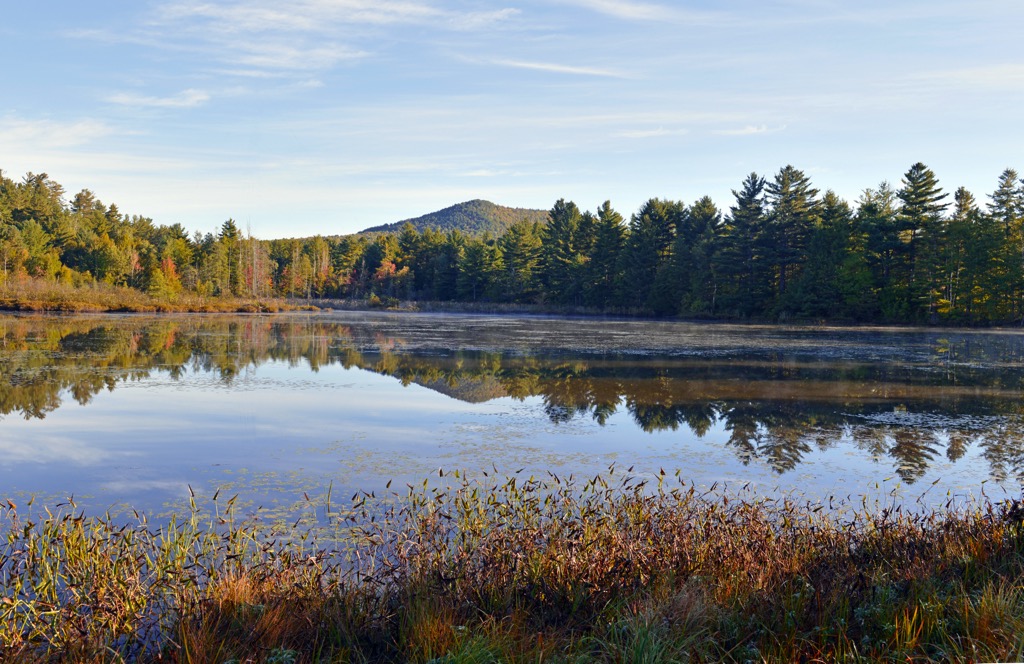
Flora and fauna found in the Saranac Lakes Wild Forest is similar to that found throughout the surrounding Adirondack Park.
Hardwood sections of forest contain American beech, red maple, and sugar maple. Fauna near the brooks include a mixture of both hardwood and softwood trees. Common tree species include black spruce, red spruce, balsam fir, and white pine.
While large mammals inhabit the surrounding landscape, spotting them within Saranac Lakes Wild Forest is less common due to the plethora of campsites and boat launches. Hikers may spot red foxes, gray foxes, white-tailed deer, and black bears.
Lakes and rivers in the region provide the ideal habitat for beavers, blue herons, bullfrogs, painted turtles, and spotted salamanders. Common fish include brown trout, lake trout, and brook trout.
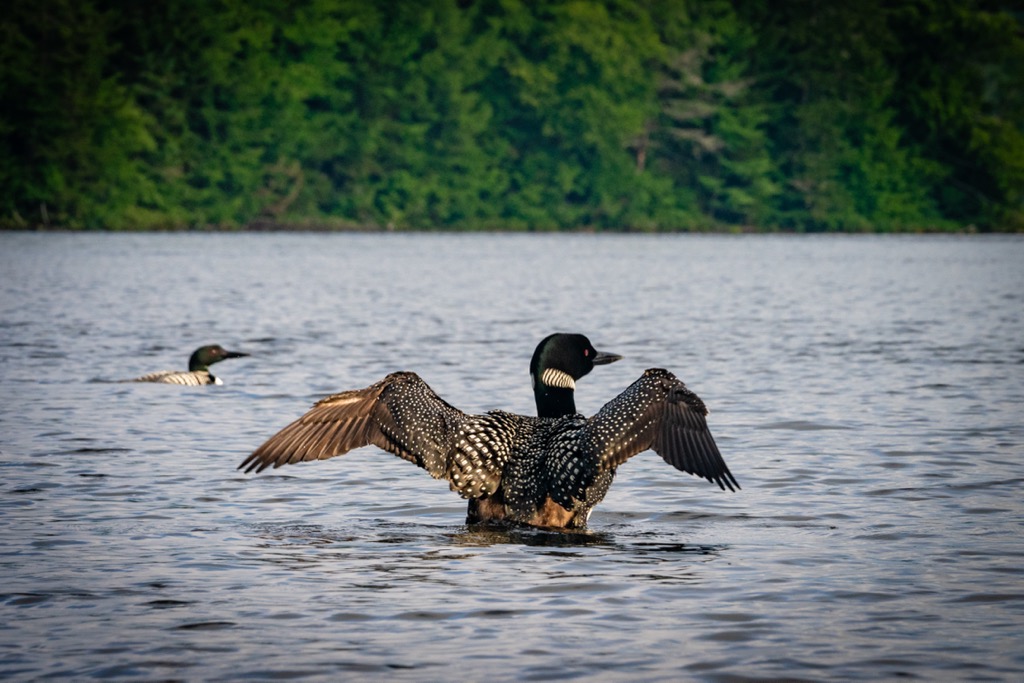
The land within and surrounding the Saranac Lakes Wild Forest has been inhabited for thousands of years. The earliest artifacts found in the region date back between 15,000 to 7,000 BCE.
Many tribes historically lived throughout the region, though the Oneida (Onʌyoteˀa·ká) and Mohawk (Kanienʼkehá꞉ka) are the most prominent peoples with ancestral ties to this land. These two tribes went on to become two of the five original tribal nations that made up the Haudenosaunee (Iroquois Confederacy).
In 1609, the Battle of Ticonderoga, marked the first recorded battle between the Indigenous peoples of the region and the European colonizers. Originally beginning as a battle between the Haudenosaunee and the Innu, Algonquin, and Huron, the French eventually allied with the Huron, Innu, and Algonquin.
The arrival of Europeans in the region also brought infectious diseases, including smallpox and measles, which decimated the Indigenous peoples who had no natural immunity to the illnesses. The Oneida attempted to remain neutral during the American Revolutionary War, but were ultimately forced to work as scouts near Fort Stanwix.
At the end of the eighteenth century, the Treaty of Canandaigua was signed between the Haudenosaunee and the US. The original treaty covered 6 million acres (2.4 million ha) of land across the Adirondack Mountains. Over the following decades, this land was drastically reduced by the US government.
This reduction of land forced the Oneida to relocate to present-day Wisconsin and parts of Canada. Today, the Oneida are organized into four nationally recognized nations, two in the US and two in Canada. This includes the Oneida Indian Nation in New York, the Oneida Nation of Wisconsin, Oneida at the Six Nations of the Grand River, and the Oneida Nation of the Thames.
Adirondack Park was protected by the New York State Legislature as a forest preserve in 1885. The preserve eventually became a state park in 1892. Today, the various lakes, forests, and towns of the region are popular throughout the year.
Amidst the private and public sections of land lie 250 designated campsites, a vast network of trails, and over a dozen boat launches.
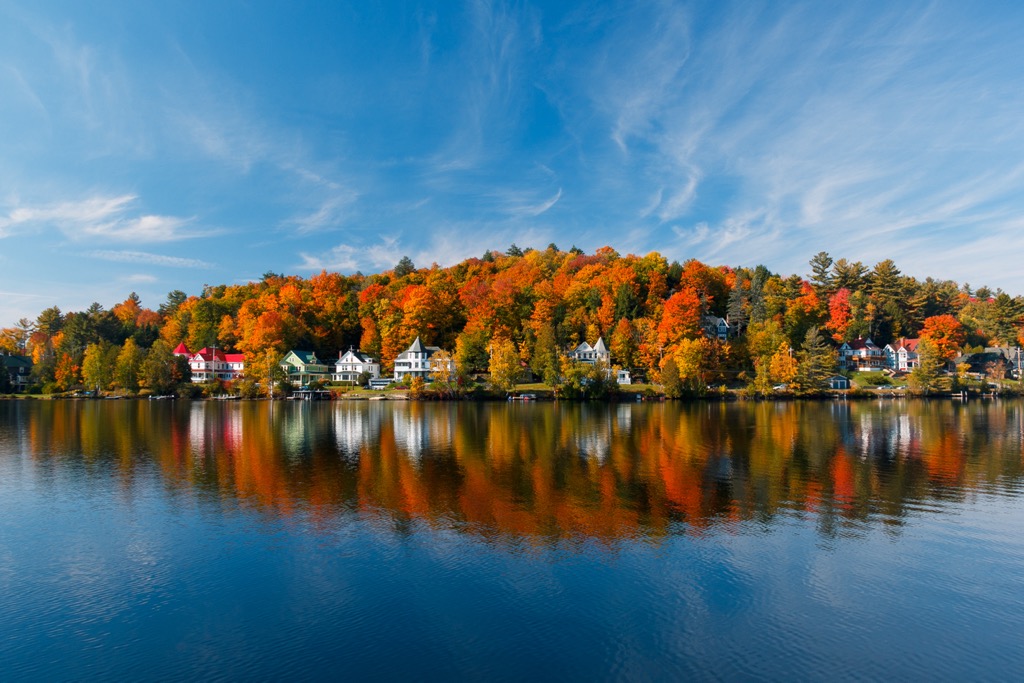
The Saranac Lakes Wild Forest is home to a number of wonderful trails for outdoor recreation. Here are a few of the trails in the forest that are worth checking out during your next visit.
This popular loop trail begins along the eastern shores of Mirror Lake. The route climbs through the forested landscape up to the top of Cobble Hill, overlooking nearby Lake Placid, Echo Lake, and Mirror Lake.
The top of the hill is free of trees, offering sweeping views of the surrounding landscape. The trail passes along the shores of Echo Lake before returning to the trailhead. Round trip the route is 2.3 miles (3.7 km) long and features 495 feet (140 m) of elevation gain.
Scarface Mountain marks the tallest and most prominent peak in the Saranac Lakes Wild Forest. This route begins relatively flat, winding through the densely forested hillsides. After two miles, the trail begins to climb steeply up to the summit of Scarface Mountain.
There are viewpoints throughout the route though the summit is forested. This hiking route can be completed throughout the year and is often used for snowshoeing in the winter. Round trip the route is 7.4 miles (12 km) long and features 1,584 feet (483 m) of elevation gain.

This shorter loop trail showcases a few of the lakes in the region. The relatively flat route loops around Brewster Peninsula along the southern shores of Lake Placid. Hikers have views of the surrounding hillsides as well as Buck Island which lies within Lake Placid. The loop trail is 2.1 miles (3.4 km) long and features 101 feet (31 m) of elevation gain.
Looking for a place to stay near the Saranac Lakes Wild Forest? Here are some of the best cities and towns to check out in the region.
The village of Saranac Lake is surrounded by the Saranac Lakes Wild Forest. Home to nearly 5,000 residents, the village marks the most populous community in all of Adirondack Park. Named after the nearby Upper, Middle, and Lower Saranac Lakes, the village has been repeatedly ranked as one of the best small towns in America to live in.
The village is full of opportunities for outdoor recreation with hiking, boating, canoeing, and fishing being the most popular. During the winter months visitors can enjoy downhill skiing, cross-country skiing, ice skating, and snowshoeing, or explore the villages’ Annual Winter Carnival.
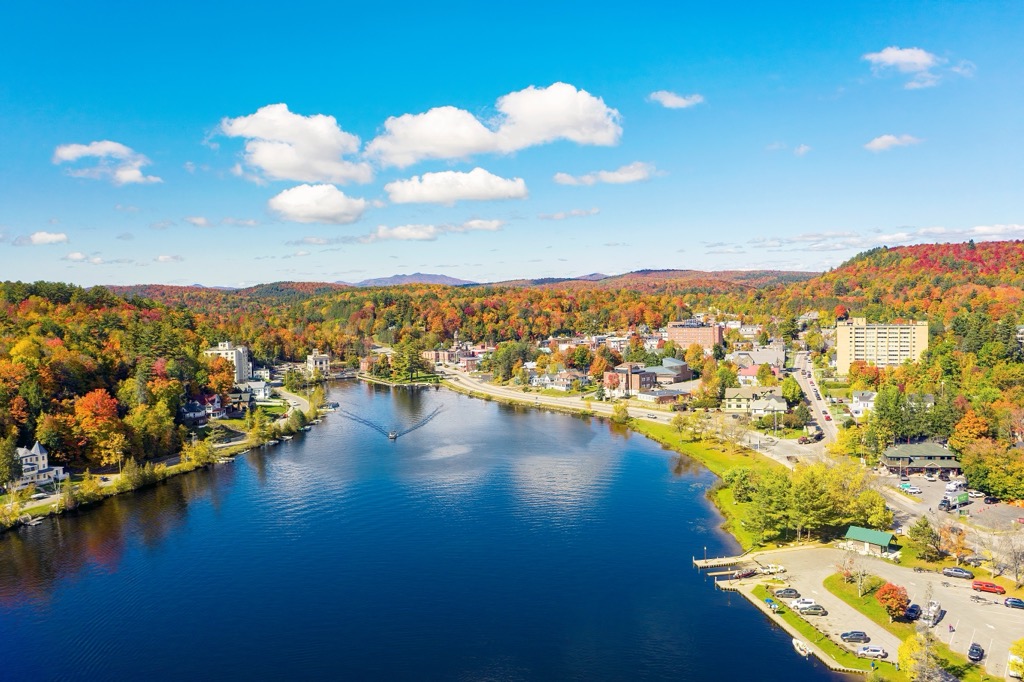
Lake Placid is a small village located along the southern edge of the Saranac Lakes Wild Forest. Situated along the lake which shares the same name, the village is home to 2,200 residents and is visited by thousands of tourists throughout the year.
Surrounded by the Adirondack Mountains, Lake Placid has hosted both the 1932 and 1980 Winter Olympics, and is one of only three locations to host the Winter Games twice. Other nearby lakes include Saranac Lake and Tupper Lake, which together make up the Tri-Lakes region.
Every year the village hosts the Ironman Lake Placid Triathlon, Annual Winter Carnival, Lake Placid Ice Dance, Winter Empire State Games, and various other sporting events. The small downtown features local shops, restaurants, and art galleries as well as sporting goods stores.
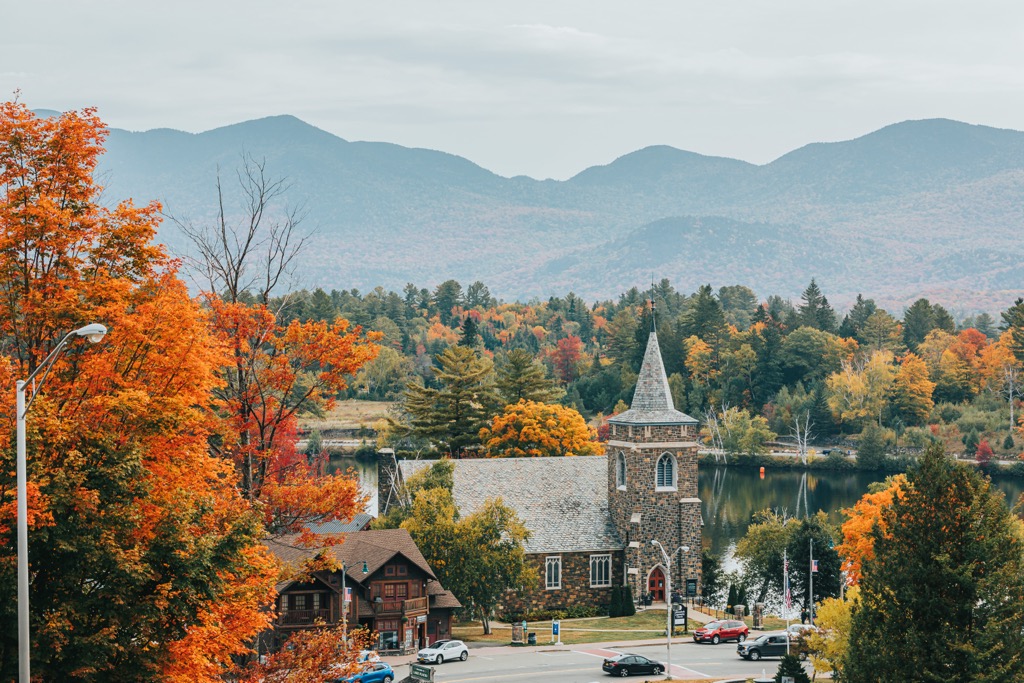
Explore Saranac Lakes Wild Forest with the PeakVisor 3D Map and identify its summits.



